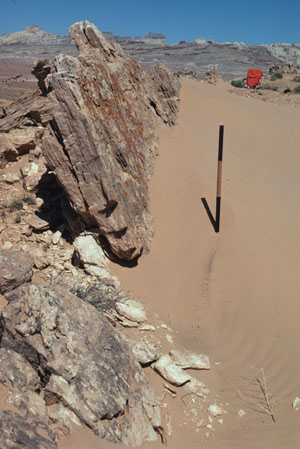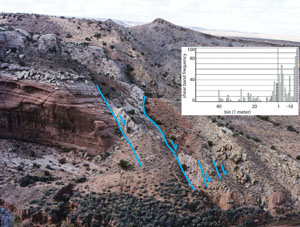| |||||||
|
|
|||||||
|
|
|||||||
| Shear Band Zones | |||||||
|
Shear band zones (Figures 1 and 2) are composed of a number of closely-spaced, sub-parallel distinct individual bands. Incipient band zones include a few bands formed next to each other. Well-developed zones (Figure 2) are generally more complex and may also include bands at different orientation than that of the main set. Well-developed shear band zones are almost always associated with slip surfaces that accommodate a large part of total slip and mark the appearance of sharp discontinuities along but usually on one side of a zone of many shear bands.
Shear band zones are typically more resistant to weathering thus forming spectacular fin-shaped geomorphic features in the field. Please see the reference Aydin and Johnson (1978) and Davatzes et al. (2003). Please also see the sections, 'Growth of Faults based on Shear Banding,' 'Geostatistical Properties of Shear Bands,' and 'Petrophysical Properties of Shear Bands.' | |||||||
| Reference: |
|||||||
| Aydin, A., Johnson, A.M., 1978 Davatzes, N.C., Aydin, A., 2003 |
|||||||
|
Readme | About Us | Acknowledgement | How to Cite | Terms of Use | Ⓒ Rock Fracture Knowledgebase |
|||||||

